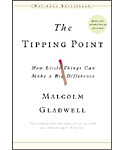If you’re trying to grow your business via the Web, you need to know about viral marketing. The term refers to a powerful internet marketing strategy whereby marketing messages are spread via individual users and coverage expands exponentially as those individuals share messages with their contacts and so on. (Remember the old ’70s shampoo ad, “and they told two friends, and they told two friends, and so on, and so on…”).
Sean Parker is probably too young to remember that ad, but his use and understanding of the Web as a marketing tool has placed him at the forefront of peer-to-peer computing. This issue of Antiphony Insights presents Sean’s perspective on this critical topic.
We’re always interested in your comments and suggestions. Let us know how you liked this issue by sending your feedback to insights@antiphony.com.
Viral Marketing
 Sean Parker is co-founder and president of Plaxo, Inc. (www.plaxo.com), which offers products that assure a simple and secure way to keep contact information up-to-date. In their first 7 months of operation, Plaxo exceeded one million registered users in over 200 countries. Previously, Sean was co-founder of Napster, Inc., which became the fastest growing and most popular online service in history. While at Napster, Sean created the business plan as well as the flagship product, but also helped to grow Napster’s user base to over 25 million registered users in just over one year and raise more than $16 million in venture financing. Sean sits on a number of technical advisory boards and is a sought-after speaker on the topic of Peer-to-Peer Computing.
Sean Parker is co-founder and president of Plaxo, Inc. (www.plaxo.com), which offers products that assure a simple and secure way to keep contact information up-to-date. In their first 7 months of operation, Plaxo exceeded one million registered users in over 200 countries. Previously, Sean was co-founder of Napster, Inc., which became the fastest growing and most popular online service in history. While at Napster, Sean created the business plan as well as the flagship product, but also helped to grow Napster’s user base to over 25 million registered users in just over one year and raise more than $16 million in venture financing. Sean sits on a number of technical advisory boards and is a sought-after speaker on the topic of Peer-to-Peer Computing.
There are two kinds of viral products: inherently viral and word-of-mouth viral. One of the preconditions for a product to be inherently viral is that you have to be able to see it in action, so you know exactly what the thing does the moment you get an e-mail.
Plaxo is inherently viral. I use it to synchronize my address book or update my address book and the recipient of the Plaxo message sees the product in action. They immediately know what it did for their friend and what it could do for them. Hotmail is another great example. Just the very act of using it leads other people to learn about Hotmail. (Read Steve Jurvetson’s paper on viral marketing athttp://drapervc.com/files/viralmarketing.html for background on the growth of Hotmail.)
Word-of-mouth viral is different altogether. An example of that would be Friendster (http://www.friendster.com), the big online dating and profile site. With Friendster, the day-to-day use of it doesn’t lend Friendster to spread to more people. You have to invite people into the application. The invitation aspect, much like Instant Messaging, is secondary to the functionality of the application, meaning when I go onto Friendster and invite one of my friends, they don’t see it in action. They get an invitation to join. It’s word-of-mouth viral.
When you have a word-of-mouth viral product, you are much more dependent upon the psychology of people to encourage trial and adoption. In an inherently viral product like Plaxo and Hotmail, the viral stuff is the core of the application and naturally fuels the growth.
Ultimately, the viral effect has to do with your cost of user acquisition but has little to do with the value of what’s being acquired.
Network Effect
Network effect has to do with the value of the network that’s being built. The product or service becomes more valuable as more people use it, and that fuels growth. Napster, for example, wasn’t viral at all, in fact, it had no viral elements. It was clearly a network effect product. Conversely, Hotmail has strong viral effects but very weak network effects because you can pile as many people as you want into one web-based e-mail system but it doesn’t make that e-mail system any more valuable. It is basically linearly more valuable and not exponentially more valuable.
The Holy Grail would be to build an application that is both viral and has a strong network effect.
Of Connectors, Mavens and Salesmen
Rob Weber, Antiphony
rweber@antiphony.com
When crafting a marketing plan to launch a new offering, or reposition an existing one, identify the select number of people who can cause a word of mouth phenomena to tip.
In our recommended reading, Malcolm Gladwell describes the personality types that are key to this process.
Mavens accumulate and share knowledge; Connectors have the contacts and spread the information; and Salesmen are the ones who close the deal and get people to try the new offering. The behaviors and activities of these people can dramatically increase the leverage of marketing investments.
Cultivate sincere, trusting relationships with these select few individuals early in the development of your new offering.
To learn more about leveraging viral marketing and network effects, contact us at insights@antiphony.com.
Recommended Reading
 The Tipping Point: How Little Things Can Make a Big Difference
The Tipping Point: How Little Things Can Make a Big Difference
Malcolm Gladwell (ISBN: 0316346624)
Nearly half a century ago (Katz and Lazarsfeld, 1955), word-of-mouth was shown to be the most effective tool in a marketing communication program.The Tipping Point is required reading as technology continues to reinvent communication and word-of-mouth.
